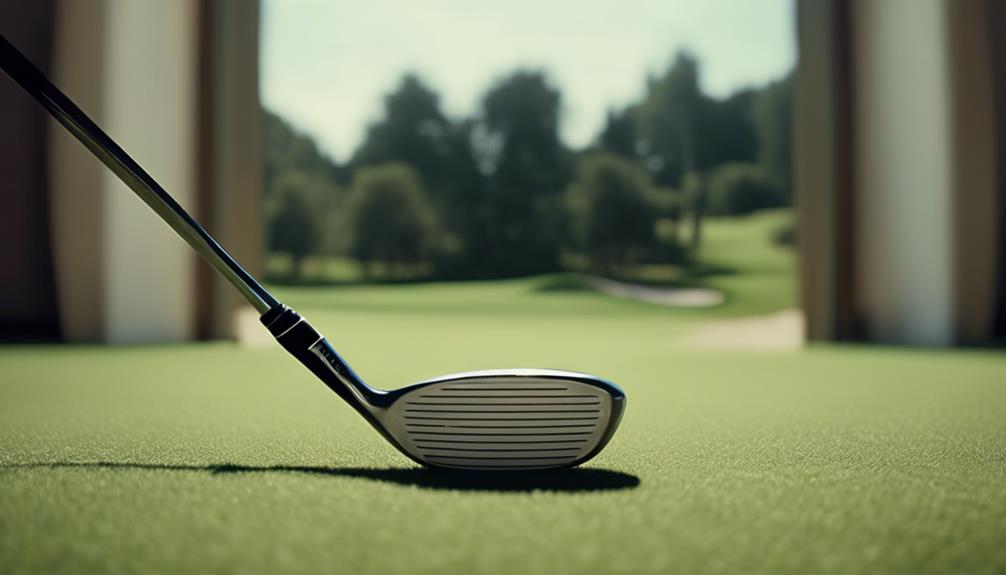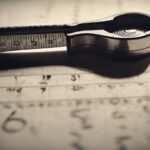- 7 Top Flite Golf Clubs XL for Improved Performance - September 28, 2024
- Top Flite Golf Clubs: Top 5 Reasons to Choose Them - September 28, 2024
- Top 3 Golf Club Fitters for a Perfect Swing - September 28, 2024
To measure the loft on a golf club in 3 steps, you'll start by preparing the club for measurement. Secure the club in a vise with the shaft parallel to the ground and align it horizontally using a level. Next, place a micro level on the club face in line with the grooves and use a protractor to take accurate loft measurements. Finally, take multiple readings, calculate the average, and understand the angle between the clubface and vertical plane. Mastering this process is essential for optimizing your club's performance – and there's more to explore to uncover your full potential on the course.
Key Takeaways
- Secure the club in a vise with the shaft parallel to the ground and horizontally aligned using a level.
- Place a micro level on the club face in line with the grooves to ensure accurate measurements.
- Use a protractor to take multiple readings and calculate the average loft measurement.
Preparing the Club for Measurement
To secure accurate loft measurement, clean the clubface and grooves of dirt, oil, or other substances that might impact the reading. This step is essential, as any residue can alter the measurement and lead to inaccurate results.
Once the clubface is clean, secure the club in a vise with the shaft parallel to the ground for stability. This will ensure the club remains steady throughout the measurement process.
Make sure the shaft is perfectly aligned horizontally by using a level on the shaft. This is crucial for accurate loft measuring, as any deviation from the horizontal plane can affect the reading.
Next, place a micro level on the club face in line with the grooves for precise measurement. This will allow you to take accurate readings, especially when using a protractor to measure the loft of your sand wedge or other clubs.
Taking Loft Measurements Accurately
With your club securely positioned and aligned, you're ready to capture precise loft measurements by using a loft measuring gauge or protractor. This step is essential for understanding the angle between the clubface and a vertical plane, which affects Ball Flight and overall performance. A slight miscalculation can throw off your entire swing, making it vital to get it right.
To ensure accuracy, follow these important steps:
- Verify the lie angle: Make sure the clubface is square to the vertical plane to avoid skewed measurements. A G400 Max, for instance, has a specific lie angle that must be considered.
- Position the gauge or protractor: Carefully place the measuring tool on the clubface, making sure it's centered and even. This will give you a precise reading of the loft angle.
- Take multiple readings: Take multiple measurements to account for any slight variations, and then calculate the average. This will help you fine-tune your clubs, just like a professional custom clubmaker would, and optimize your Hzrdus Smoke shafts for maximum performance.
Understanding Loft Readings and Adjustments

By understanding the nuances of loft readings, you'll reveal how these precise measurements influence your game, impacting everything from trajectory and distance to launch angle and spin rate.
When purchasing a new club, particularly a driver like the Max, grasping how loft adjustments can either make or break your shot is crucial. I've never witnessed a golfer achieve consistency without a clear understanding of loft readings.
Proper loft alignment with other clubs in your set is vital for a seamless shift between shots. Even a slight miscalculation can lead to a quite significant difference in performance.
By comprehending how loft readings impact your shots, you'll be able to optimize your equipment for improved outcomes on the course. Remember, loft measurements aren't solely about the numbers; they involve the subtleties of club design and how it interacts with your swing.
Frequently Asked Questions
How Do I Measure the Loft of a Golf Club?
When you measure the loft of a golf club, you're ensuring a precise fit, as it affects your golf swing's launch angle. Check the loft degree in club specifications, as it's essential for distance control, and consider loft adjustment for peak performance.
How Much to Check Loft and Lie?
As thou dost wield thy trusty golf club, thou shouldst check loft and lie every 6-12 months to avoid medieval-like inconsistencies; consider loft adjustment and lie measurement to guarantee peak performance, lest thy game suffereth from inaccurate loft angle and lie angle settings.
What Is a 3 Iron Loft?
You're wondering what a 3 iron loft is; typically, it's around 21-24 degrees, which is the club loft or iron loft measured as the loft angle, affecting the ball's trajectory and distance, and suiting faster swing speeds.
How Do You Measure a Golf Wedge Angle?
You achieve loft accuracy by precisely measuring the angle between the wedge face and a vertical plane using a loft measuring gauge or protractor, ensuring angle precision, and accurately calculating the degree calculation for best club performance.
Conclusion
You've successfully measured the loft of your golf club. Now, it's time to put that knowledge into practice.
Think of loft adjustments like fine-tuning a precision instrument – a slight tweak can make all the difference.
Just like a skilled musician adjusts their guitar's strings to achieve perfect harmony, you'll be able to dial in your club's loft to strike the ball with precision and consistency, shaving strokes off your game.




